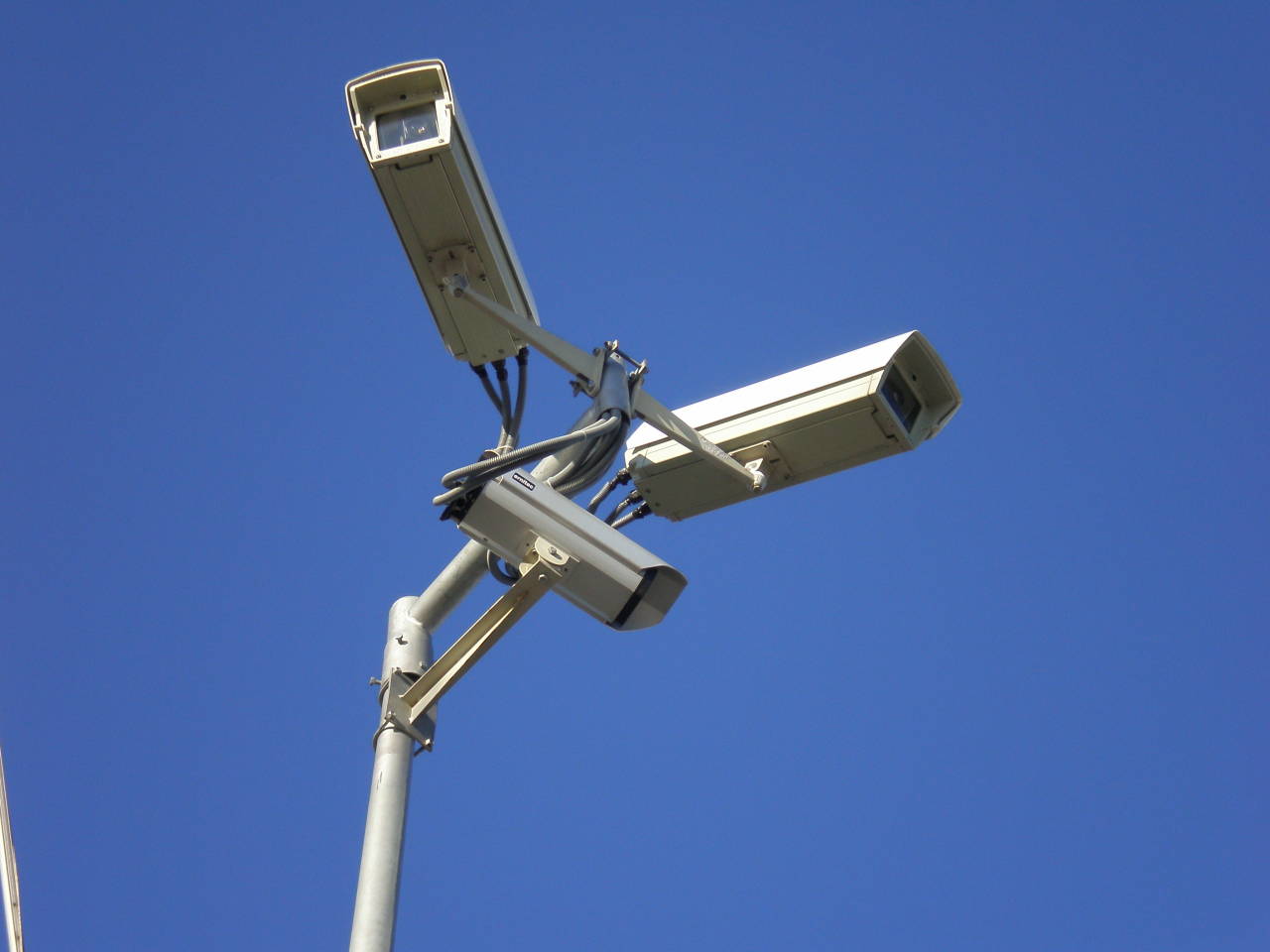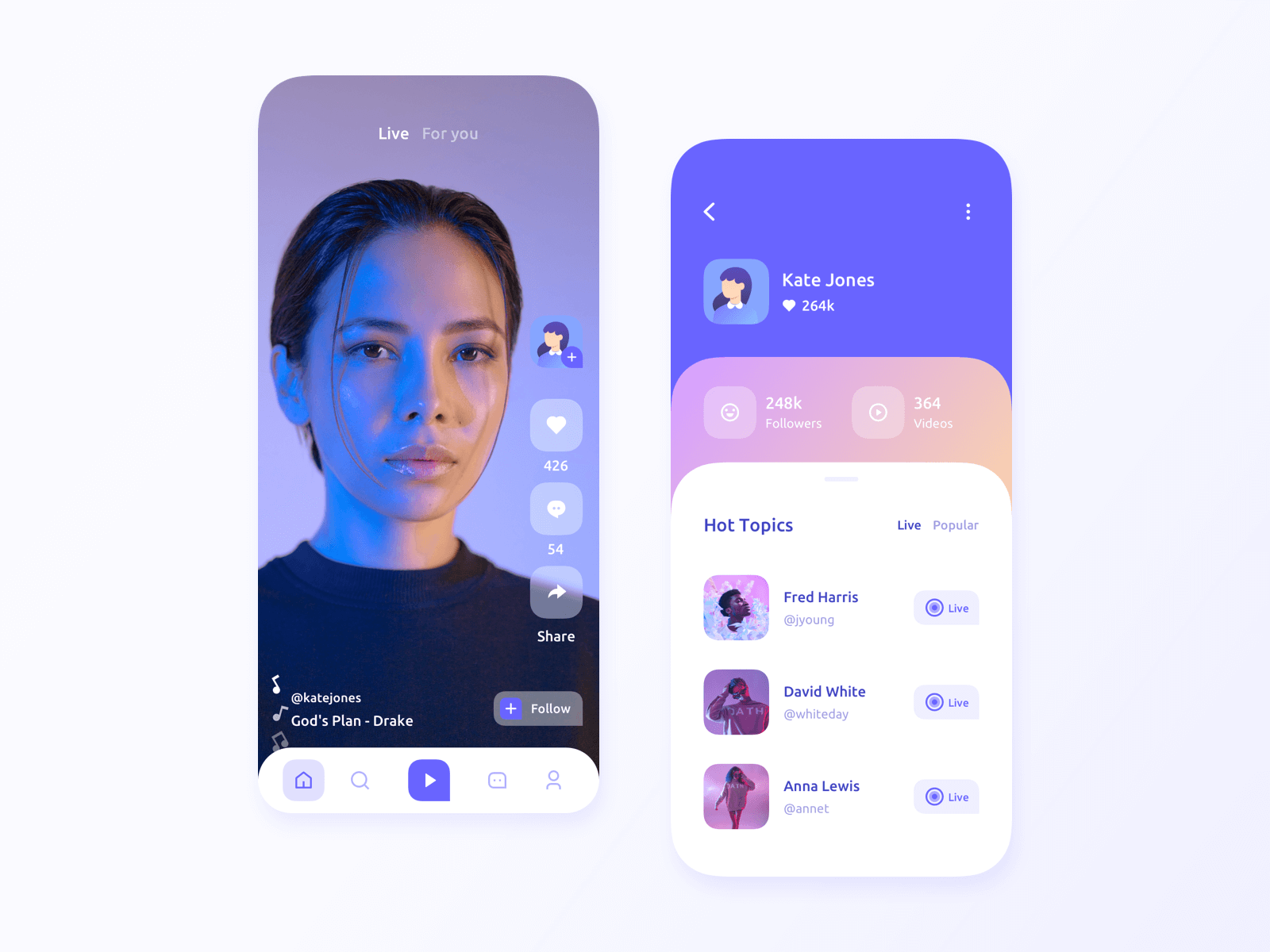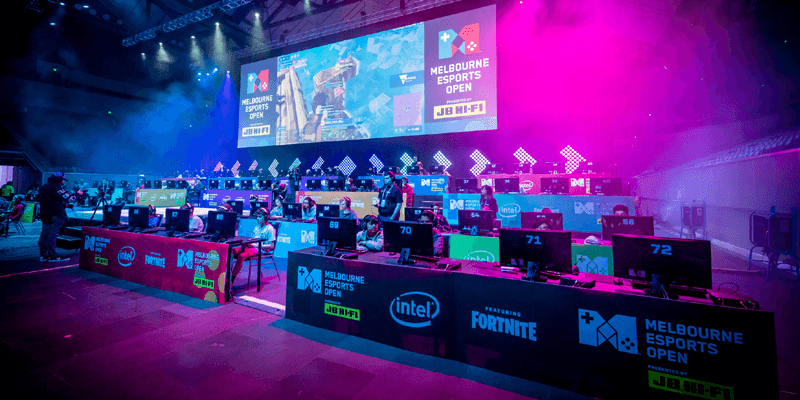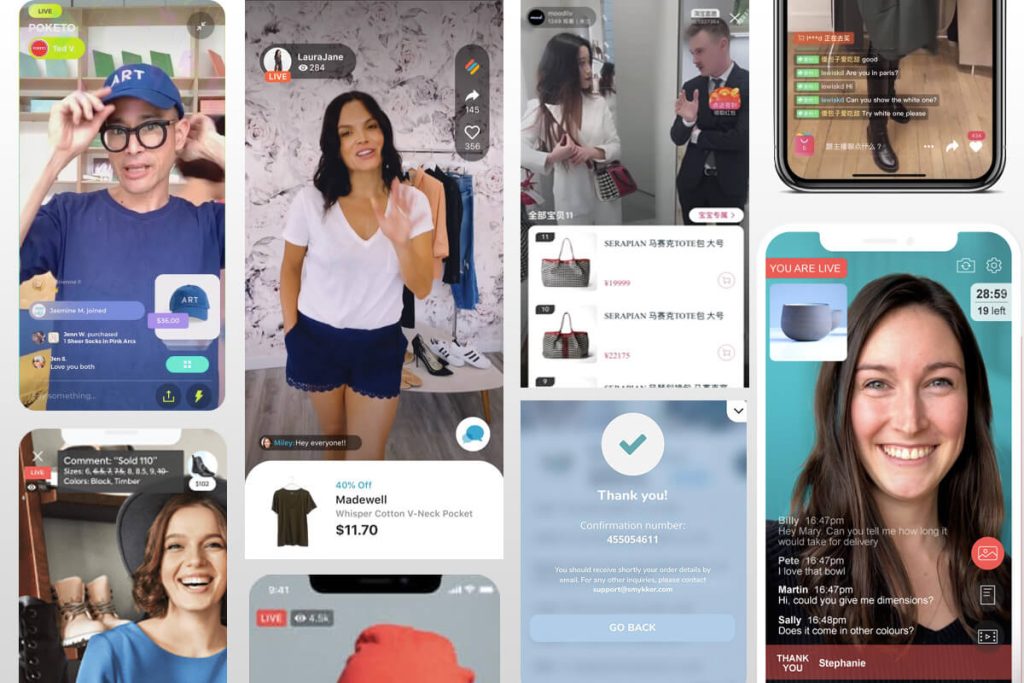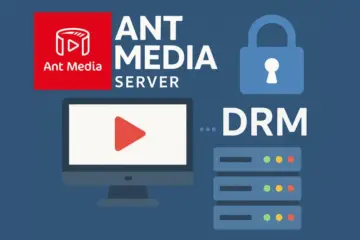After Covid-19, people started to demand more live streams. But especially in some live streams which we will talk about in the rest of the blog post should be really ”live” to satisfy the audience. People started demanding low latency or even ultra-low latency. “Interaction” is now one of the factors that affect the quality of a live stream.
Let’s start with how popular live streaming is. According to the Cisco Annual Internet Report; Increasing internet connection speeds will enable a higher resolution to live video streaming and it will become popular in every field.
With the popularity of live video streaming, the need for ultra-low latency video streaming or we can say real-time streaming is increasing day by day. In fact, it is becoming a necessity rather than a need.
What is Low Latency and Why Does It Matter?

Streaming latency is basically the delay between the camera capturing an event and the event being displayed on viewers’ devices. It takes time to transfer the content from the source to the viewers’ devices. The time of this period depending on the type of live streaming directly affects the success of the live broadcast.
Imagine you are part of a live broadcast where interactivity needs to be intense. A question is asked, but the question takes time to reach you. There are gaps between questions and answers. What would your audience think of this situation? They probably leave the broadcast. As we said before, latency in live streaming is one of the key points for success. If we come to the question of what is low latency, low latency is described delay of five seconds or less.
What is Ultra-Low Latency?
As we mentioned above, Low latency is described delay of five seconds or less. That sounds good, right? But some people need less delay, very little delay according to their use cases. That’s why ultra-low latency video streaming solutions have emerged. Ultra-low latency is described as latency of a sub-second. It can meet the needs of people who need real-time engagement and high interaction.
Video Streaming Latency
In such cases, ultra-low latency streaming solutions help us.
I’ve seen a huge increase in searches for “zero latency video streaming” on Google. However, the lowest latency/delay we can reach the moment is 0.150 seconds with Amazon Wavelength. You can see the details in this blog post. Maybe we will reach zero latency in the future. 🙂
Most used ultra-low latency streaming use cases
Ultra-low latency video streaming, also known as real-time video streaming is great for highly interactive live streams with real-time engagement.
Here are some real-time latency use cases:
Education
Education has become a very important topic with Covid-19. Because, educational activities in many countries stopped, hundreds or even thousands of companies started working remotely. This situation made education impossible with classical methods. The covid-19 pandemic has shown us the inadequate use of technology in every field of education.
Today, Teachers and school administrators have powerful technology at their fingertips: Live Streaming technologies. They can stream lessons and events from their schools, homes, or wherever they are to students’ devices.
Streaming technologies allow a wider audience to observe and even participate in the lessons. Streaming technology also enables educators to bring subjects and events from around the world, like an animal sanctuary or zoo instance, into their classrooms, which can create engaging, in-the-moment learning experiences.
However, education needs ultra-low latency video streaming to increase the interaction and success of the lessons. Ultra-low latency video streaming applications usually allow interactivity from the viewers, which allows the possibility of a more connected experience, with the addition of comments and live questions.
Webinar and video conferencing
Webinars and Video conferences have made our lives much easier and more effective. Ultra-low latency plays a very important role here.
Webinar
Ultra-low latency is crucial for interactive streaming applications. Depending on your use case, a few seconds of latency might be fine, or you might need to try to hit that sub-second target. Webinars are a great way to learn new things or engage people. The webinar has become very popular lately.
The major reason is that the Corona Virus (COVID-19) pandemic affects the whole world and enforces us to stay at home and perform our daily routine from home including communicating, learning, shopping, training, and working. Our lives are changed totally and we need a more remote way of living than ever before.
But you cannot engage people with high latency. Think about the delayed speeches, starting to speak at the same time, then long silences … These situations make it impossible for the viewers to watch an enjoyable and useful broadcast and cause them to leave the webinar. At this point, ultra-low latency video streaming technologies come to rescue our webinars.
Ultra-low latency video streaming technology increases:
1. Success of the webinar
2. Engagement
3. The happiness of the audience
Video conferencing
Video conferencing is a type of online meeting where two or more people engage in a live audio-visual call. The participants can see, hear, and talk to each other in real time, no matter their location.
In business, people often use video conferencing to communicate and collaborate inside and outside an organization. Simply get the necessary hardware and software to get the most out of the experience.
What do you need for a video conferencing system?
Video conferencing brings people working from different places together in a virtual meeting room. It has been the most effective way to hold meetings in recent years. video conferencing latency is one of the most critical points. In order to have a virtual meeting, you’ll need:
- A stable internet connection
- A video display device (laptop, desktop monitor, television screen, etc.)
- A computer or conference phone
- Other peripherals (webcam, microphone, headset, speaker, etc.)
- Video conferencing software
IP camera streaming
An Internet Protocol camera, or IP camera, is a type of digital video camera that receives control data and sends image data via the Internet. They are commonly used for surveillance but unlike analog closed-circuit television (CCTV) cameras, they require no local recording device, only a local area network. Most IP cameras are webcams, but the term IP camera or netcam usually applies only to those that can be directly accessed over a network connection, usually used for surveillance.
Some IP camera streaming use cases include:
- Nature shots: IP camera streaming is a great solution for broadcasting nature life. Some of the reasons for this are that it is easy to use, and is resistant to the harsh conditions of nature. For this reason, it is quite easy to present the magnificent events of nature to the audience.
- Performances: Whether you want to shoot a concert or theatrical performance, IP cameras can provide dynamic angles that will engage your audience.
- Ceremony: IP cameras don’t need operators to move because they can be fixed. This allows IP cameras to be placed in perfect positions to capture great angles.
- Surveillance: Whether you’re looking to add security to a bank, a construction site, or your home, IP cameras can be a great option to provide that constant supply of peace of mind.
Mobile streaming and communication apps
Whether it be sports, news, live music, live chatting, or live event apps; everyone wants to experience it in real-time. Would you be happy when delays occur in the live broadcast of a person you love to follow or playing your favorite quiz game? Probably answer is no and your audience wouldn’t want that too. Ultra-low latency video streaming WebRTC SDKs and APIs let us build apps with ultra-low latency streaming features.
Auction and biddings
Activities such as auctions and biddings are exciting because of their fast pace. And that speed demands ultra-low latency video streaming with two-way communication.
For example, live sports betting has become popular all over the world. The key point in the live betting process is that the bets can be made on time. Ultra-low latency video streaming eliminates problematic lags, ensuring that everyone has the same opportunity to place their bets in a time-synchronized experience.
Similarly, online auctions and trading platforms are big business and any delay could mean that bids or trades are not properly recorded, and that is a disaster. Split seconds can mean thousands or even millions of dollars.
E-sports betting
We have mentioned betting above, but e-sports betting is a very new issue. With the popularization of e-sports, the betting industry turned its direction here. Ultra-low latency streaming ensures that bets are made on time and the process works in a controlled manner.
Video game streaming
When participating in online games, ultra-low latency is more important, as delays, or buffering, will impair/frustrate the user experience significantly. No one wants to attack enemies that are no longer there or no one wants to be behind the enemy for seconds. And gamers are generally complaining about interaction problems. Ultra-low latency allows us to reduce the latency down to 0.5 seconds with WebRTC. That means happy gamers and audience, high engagement, and success!
Live commerce – Livestream shopping
Live commerce brings e-commerce into the future with live video events, combining in-store shopping experiences with online convenience. For example, a store employee might present a live product demonstration or even try the product. With live interactive video streaming, customers can interact, comment and even ask questions directly to the broadcaster. Viewers who get the necessary information in the live stream can make purchases during the broadcast and return to the broadcast later.
The live shopping experience is designed to offer an in-store shopping experience online. The stream can contain links to product information and many other features that will benefit viewers. It combines the best aspects of the in-store experience with the ease, convenience, and speed of the live shopping experience.
Telehealth
Telehealth is a modern way of delivering healthcare services to patients. The Health Resources Services Administration describes telehealth as the use of electronic information and telecommunications technologies to support clinical health care, patient and professional health-related education, public health, and health administration. According to some reports, the telehealth market will reach around $20 billion by 2026.
Example benefits of telehealth in surgery
- Pre-op assessments provided via telehealth are accurate, prevent patients from having to visit the hospital, and reduce complications during surgery.
- Post-op wound checks via telehealth reduce the need for patients to travel to the hospital for in-person checks.
- Post-surgical follow-ups via telehealth are correlated with quicker adjustment to medications, better medication adherence, and lower systolic blood pressure.
Digital Fitness
Fitness is no longer only an activity that is made in the gym. People want to work out whenever and wherever they are available. Ultra-low latency video streaming technologies are gaining importance here. An interactive online fitness experience will work just as well as in the gym and be enjoyable.
How to achieve ultra-low latency? The answer is WebRTC: real-time video streaming protocol
We have covered low-latency and ultra-low-latency video streaming. Now, you know when you need ultra-low latency. However, you should also know which protocol enables ultra-low latency video streaming. It is WebRTC!
What is WebRTC?
WebRTC (Web Real-Time Communication protocol) is an open-source standard for real-time communication supported by almost every modern browser, including Safari, Google Chrome, Firefox, Opera, and others. WebRTC supports Opus audio codec as well as high-quality VP8 and VP9. In the near future, the protocol will gain support for a brand-new AV1 video codec. The protocol is expected to be used in a much wider area.
One of the biggest advantages of WebRTC is that it converts millions of browsers into streaming terminals without the need to install any additional plugins. What’s more, WebRTC supports sub-second latency, which means no more delay. Finally, the protocol uses an adaptive bitrate technology that allows it to automatically adjust video quality and avoid any interruptions. To learn more about WebRTC, you can check WebRTC Basics & WebRTC Components blog post.
What is WebRTC and how does it Work? – Free WebRTC course with Tsahi Levent-Levi
How can Ant Media Server help you with your ultra-low latency streaming needs?
Ant Media provides ready-to-use, highly scalable real-time video streaming solutions for live video streaming needs. Based on customer requirements and preferences, it enables a live video streaming solution to be deployed easily and quickly on-premises or on public cloud networks such as Alibaba Cloud, AWS, and Azure.
Ant Media Server supports most of the common media streaming protocols like RTMP, HLS, RTSP, DASH(CMAF), and of course WebRTC. Actually, Ant Media Server is one of the best WebRTC servers on the planet. Ant Media Server provides all of the features listed above. Ant Media Server is able to provide WebRTC publishing latency as low as ~0.2 seconds. If you like to experience Real-Time Video Streaming, then try Ant Media Server for free now.
Useful links for streaming heroes:
WebRTC Servers
Free RTMP server installation
SRT Guide
Building WebRTC Mobile App
Android SDK
iOS SDK
Flutter SDK
React Native SDK
Unity SDK
WebRTC to HLS & DASH
IP Camera Streaming Made Easy with Ant Media Server
Future of Ultra Low Latency Streaming Market, Linear Live Streaming 101.
We are always with you for all your questions. You can reach us via contact@antmedia.io.




